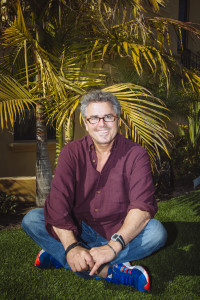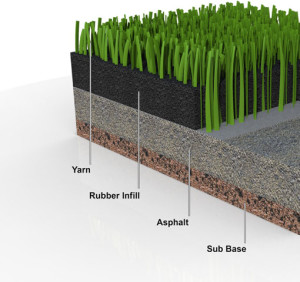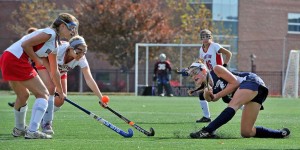Using Artificial Turf in Drought-Stricken CA. Related worries?

A recent Washington Post article (cleverly titled by one of its editors), “Fake grass gains ground in California…,” brings to mind another piece on the subject back in December.

As recently blogged, CA is in a tremendous, historic drought. Much other coverage has been given the subject of late by the likes of NPR and major, and not-so-major news dailies.
In the article, it’s stated that, on average, 55 gals. of water PSF are used annually to maintain real grass. Our former home in Annapolis has about about 7-8K sq. ft. devoted to the monoculture and gardens. While by no means the desert-like conditions in many parts of southern CA, frequent watering mid-summer was typical, often including shrubs and trees. So, on average, 440K gals/yr of water were committed to maintaining a reasonably healthy-looking turf, gardens and trees there.
As reported by the U.S. EPA, the average household of 4 uses 400 gals/day or 146K/yr. inside the home. So, a bit better than 3 years’ of water use inside the home is what was expended annually watering the grass in Annapolis. Perhaps overstated for Annapolis, but very likely understated for CA.
Did you see the palm trees behind Mr. Knight? Indicative of the native climate, I’d say. The article goes on to note that CA is offering rebates of as much as $3.75 PSF for installing low- or no-water landscapes. But, some municipalities have taken the stance that artificial is tacky-looking so not allowed.
 In the illustration of synthetic turf to the right is a substrate called “rubber infill.” This material is typically sourced from ground-up rubber tires from vehicles. Some say this infill “off-gasses” chemicals that are harmful, if not toxic, to human health.
In the illustration of synthetic turf to the right is a substrate called “rubber infill.” This material is typically sourced from ground-up rubber tires from vehicles. Some say this infill “off-gasses” chemicals that are harmful, if not toxic, to human health.
Well, playing ball with the kids on the synthetic front or back yard turf may be one thing, but on athletic fields possibly another.
Nancy Alderman, president of Environment and Human Health, Inc. (EHHI), is one who advocates against artificial turf. Her organization shows the “crumb” rubber lodging in shoes, socks/stockings, clothing and even hair and ears of athletes who play on these fields. Her group notes that 20-30% of the typical rubber tire, for example, consists of carbon black, a carcinogen. EWG rates the overall and cancer hazard of carbon black as better than moderate.
In support of EHHI’s objection to use of the material in synthetic turf fields, it reports that Amy Griffin, a University of WA assistant soccer coach, has compiled a list of 38 U.S. soccer players–“most of them goalies–who have been diagnosed with cancer.” Look here for an NBC investigative report of about 9 months ago that may be of interest, both written and video.

Here’s a synthetic turf field at Roland Park Country School being snow blown. It’s artificial turf field is by FieldTurf, a crumb rubber product. I learned of how water is taken by subterranean pipe off the field and redirected into nearby wooded areas for additional, natural irrigation. Incidentally, the school is proud of its environmental consciousness, and has reasons to be.
Some artificial turf is made from soy bean oil and recycled plastic bottles.